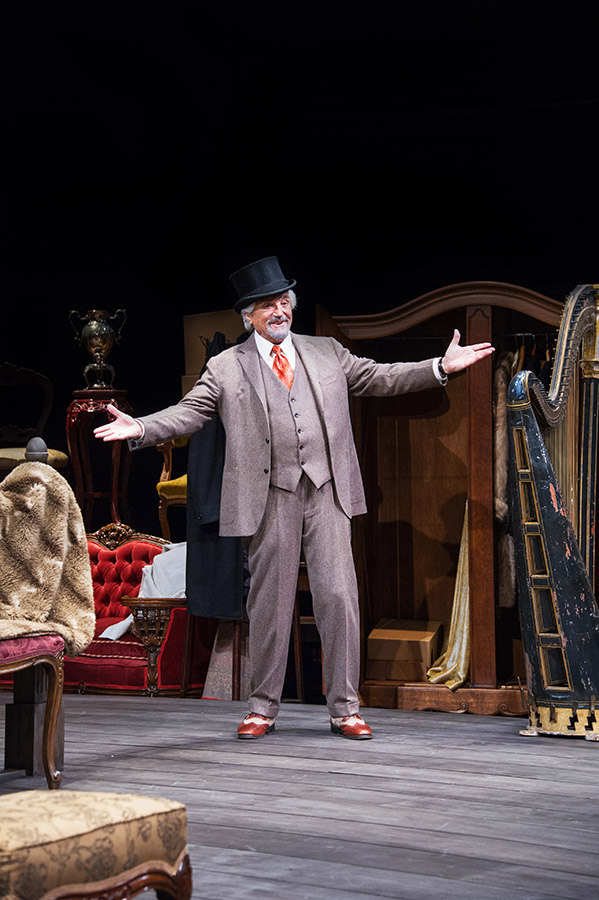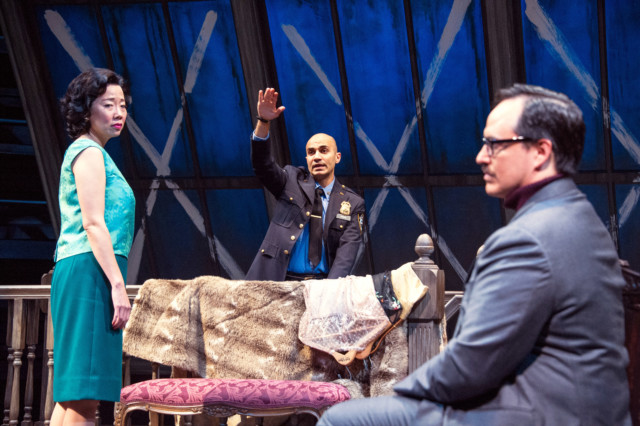We all have our own narratives, and just as the great American essayist Joan Didion would famously write, we tell ourselves stories in order to live. Our narratives give us meaning, an impetus to be.
These stories are the glue that keeps the lives of the characters together in a touching and emotional version of Arthur Miller’s play “The Price”, being staged at Washington D.C.’s Arena Stage through November 12th. It’s directed by Seema Sueko and stars Hal Linden, a three time Emmy winner who also has a Tony Award.
Ahmad Coo is a producer and copy editor for the Global Business show on CGTN America. His analysis represents his views alone.
Even though the play was written in the 1960s, it’s still very relevant today. Miller’s play about American family dynamics is timeless so it’s easy to see the “The Price’s” Franz family existing in today’s world.
When the play opens, we see Vic Franz (played by a very intense Maboud Ebrahimzadeh) in the house he grew up in. The house hasn’t been lived in for years and is scheduled to be demolished. Before it’s destroyed though, Vic needs to get rid of the furniture lying around the house and contacts an appraiser to see if he’s interested in buying the pieces. He’s also called his younger brother, Walter (played by Rafael Untalan), to let him know that he’s selling their dead parents’ furniture and belongings but hasn’t been able to reach him.
He’s uneasy because he hasn’t seen his brother in nearly 30 years and the house brings back memories he’d rather not remember. His wife Esther (played by Pearl Sun) eventually drops by to say hello and check on Vic. She’s palpably nervous and eager to make sure that Vic gets a good price for the furniture. The couple has been living paycheck to paycheck, so any extra money would give them more breathing room. Moreover, Vic is about to retire from the police force and the pension he’s going to get won’t be enough to cover everyday living.
So when the appraiser Gregory Solomon (nimbly and perfectly played by Hal Linden) arrives, Vic wants a quick estimate for everything in the house. Immediately we sense that Vic’s over-the-top pushiness seems out of place. Doesn’t he want to get a good price for the antique furniture?

Hal Linden as Gregory Solomon in The Price, running October 6-November 12, 2017 at Arena Stage at the Mead Center for American Theater. Photo by Colin Hovde
Vic finally wrangles a price from Mr. Solomon. But before he gets all the cash in his hand, his brother Walter finally arrives- which is probably why Vic and Esther were trying to wrap up the deal as soon as possible. Suddenly it seems the deal is off. Vic says he wants to give Walter half of the proceeds just to be fair. Walter doesn’t accept the offer, telling Vic that he needs the money more.
What starts as a very cordial reunion between the two brothers slowly deteriorates, bringing to the surface painful memories of growing up and how they suffered under their parents. The audience learns that the Franz family was once wealthy and the toast of high society. But a series of bad decisions and destructive habits led to their ruin.
The two brothers emerged from their family’s collapse with deep psychic wounds which would also make it almost impossible for them to reconcile. The narratives the brothers tell themselves follow similar arcs, but Vic and Walter have very different interpretations of their family history.
The director Seema Sueko knows that we are all nursing wounds from living and growing up with our families. But we can choose to be victims or survivors, depending on how one wants to interpret their version of their narrative. Indeed all the characters in “The Price” have emotional baggage, not least the appraiser Mr. Solomon. He’s lived through several traumatic experiences: two World Wars, the Depression and the tragic death of his daughter. Yet he’s happy to be alive despite all the horrors of his life.
But Vic and Walter aren’t cut from the same tough, durable cloth Mr. Solomon comes from. They’re both straining, trying to get past their shared history to reach some common ground but it’s heartbreaking to see them misinterpret and distort their memories of how they grew up. Instead of repairing their relationship, Vic and Walter accuse each other of betraying the other, a common theme in Arthur Miller’s works. It’s not clear who’s telling the truth as both recount each other’s lives growing up.
While Miller is better known for his explorations of the darker side of families and their impact on society, he ultimately believed that individuals in those families could transcend their background and become decent human beings. Both Vic and Walter emerged from their backgrounds as fully functioning, albeit damaged adults.

(L to R) Hal Linden as Gregory Solomon and Rafael Untalan as Walter Franz in The Price, running October 6-November 12, 2017 at Arena Stage at the Mead Center for American Theater. Photo by Colin Hovde.
They found their own way of coping and healing from the damage inflicted by their own families. Unfortunately Vic and Walter took very different paths to recovery.By the end of the play, it’s clear that Vic and Walter will never see eye-to-eye about who wounded who. At some point, we have to- in the director’s words- “peel the scabs off and wade through the muck” of our lives instead of waiting for someone to acknowledge how we were wronged and make everything better.
No one can save anyone, and those who do decide to save themselves eventually have to pay a price for doing so. In the case of the Vic and Walter, their survival came at the cost of their bond as brothers.
 CGTN America
CGTN America
 (L to R) Pearl Sun as Esther Franz, Maboud Ebrahimzadeh as Victor Franz and Rafael Untalan as Walter Franz in The Price, running October 6-November 12, 2017 at Arena Stage at the Mead Center for American Theater. Photo by Colin Hovde.
(L to R) Pearl Sun as Esther Franz, Maboud Ebrahimzadeh as Victor Franz and Rafael Untalan as Walter Franz in The Price, running October 6-November 12, 2017 at Arena Stage at the Mead Center for American Theater. Photo by Colin Hovde.

